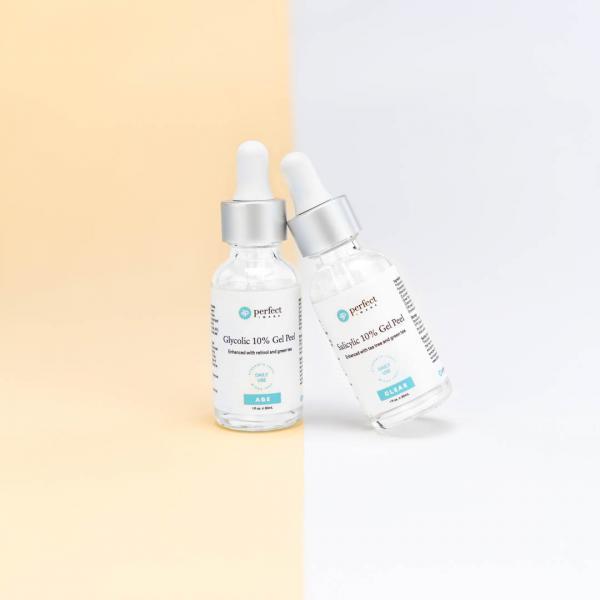Have you ever looked at a skincare bottle or packaging and stood there confused when you see these two words pop out; AHA and BHA? Or maybe you've been using products that contain one or both of these acids and you're not really sure what they are doing. AHAs and BHAs are super common in skincare, especially when it comes to exfoliation and chemical peels--which is why it is important to have an understanding of these two acids. I understand that when hearing the word acid it can come off intense and give you mixed feelings, but trust me, they are not scary! Quite the opposite, they do wonders for our skin and in order to help you choose the right acid for your skin, and give you more confidence understanding what these acids are doing for your skin; I’m going to dive in deep and explain to you the difference between these two sought after exfoliating agents. Just think of me as your fairy skin godmother who will guide you to glowing skin!
What are AHAs?
AHA stands for Alpha-Hydroxy Acid and are water soluble acids, meaning they are all about that H2O. AHAs are not only attracted to water, but are able to bind to water molecules within our skin, which increases hydration. As a bonus they are also able to penetrate deep into the epidermis which make them our anti-aging heroes that combat fine lines and wrinkles by stimulating collagen, smoothing out texture issues and addressing hyperpigmentation. The most common AHA is Glycolic Acid which is an anti-aging staple and a must have for exfoliating dead skin and revealing smoother skin. Glycolic acid is derived from sugarcane and is the smallest of the AHAs able to penetrate deeper into the epidermis and reach the dermis layer of our skin. Other common AHAs are: lactic acid, mandelic acid, and malic acid. Lactic acid is naturally occuring in the body and is derived from lactose in milk. Lactic acid has quickly become a top contender for AHAs, and is one of the most gentle acids with its moisturizing benefits making this a staple for those with sensitive skin types. Targeting not only fine lines and wrinkles, as well as hyperpigmentation, it also has brightening properties that work wonders to reveal an overall even skin tone making this a quick must have for skincare regimens.
What are BHAs?
BHA stands for Beta-Hydroxy Acid and are oil soluble acids. Meaning...you guessed it! They are attracted to oil and are the cure all for oily skin, acne, blemishes and clogged pores. The most common type of BHA is Salicylic Acid which I'm sure most of us are familiar with if we have ever had a pimple (or two) in our lifetime. Due to its oil loving properties, salicylic acid is able to penetrate deep into a pore and remove oil, bacteria, dirt and debris which helps pave the way to clearer skin. Salicylic acid also helps with inflammation making it even better for inflamed angry skin invaded by pimples and breakouts.
Which to Choose?
When deciding which of these two types of acids you should go for, first things first you need to identify your skin type, concerns and your skin's overall sensitivity. Both types of acids have a couple of similarities but generally address certain skin concerns. To easily break it down, if your skin is either on the dry or sensitive side, then stick with AHAs to lock in that necessary moisture. However, if your skin is oily and acne prone, then BHAs aka Salicylic acid is going to be your BFF. Keep in mind that with Salicylic acid it attracts that oil so it can lead to the skin becoming drier and with too much use can increase sensitivity. Make sure to always follow with a hydrating, gentle moisturizer and your SPF! (That is also when using AHAs.)
Can You Combine Both AHAs and BHAs?
Yes, but you need to be cautious. Most skin concerns can be addressed with either an AHA or BHA, however, if your skin has deeper issues that need to be addressed you can benefit from a combo of AHA and BHA. Just be cautious of the strength and percentage of acid in the product/s. Both acids when used regularly can result in the skin becoming dry and sensitive if overused, and since both are exfoliating agents, there is a chance your skin can have a peeling effect. Because of this, it is best to slowly incorporate both acids into your routine by alternating.
Skin tip from me, the professional! If new to AHAs and BHAs, consider slowly incorporating them into your skincare routine by trying any of our daily-use gel peels that are 10% in concentration and are gentle and safe enough to use every day for glowing skin.

